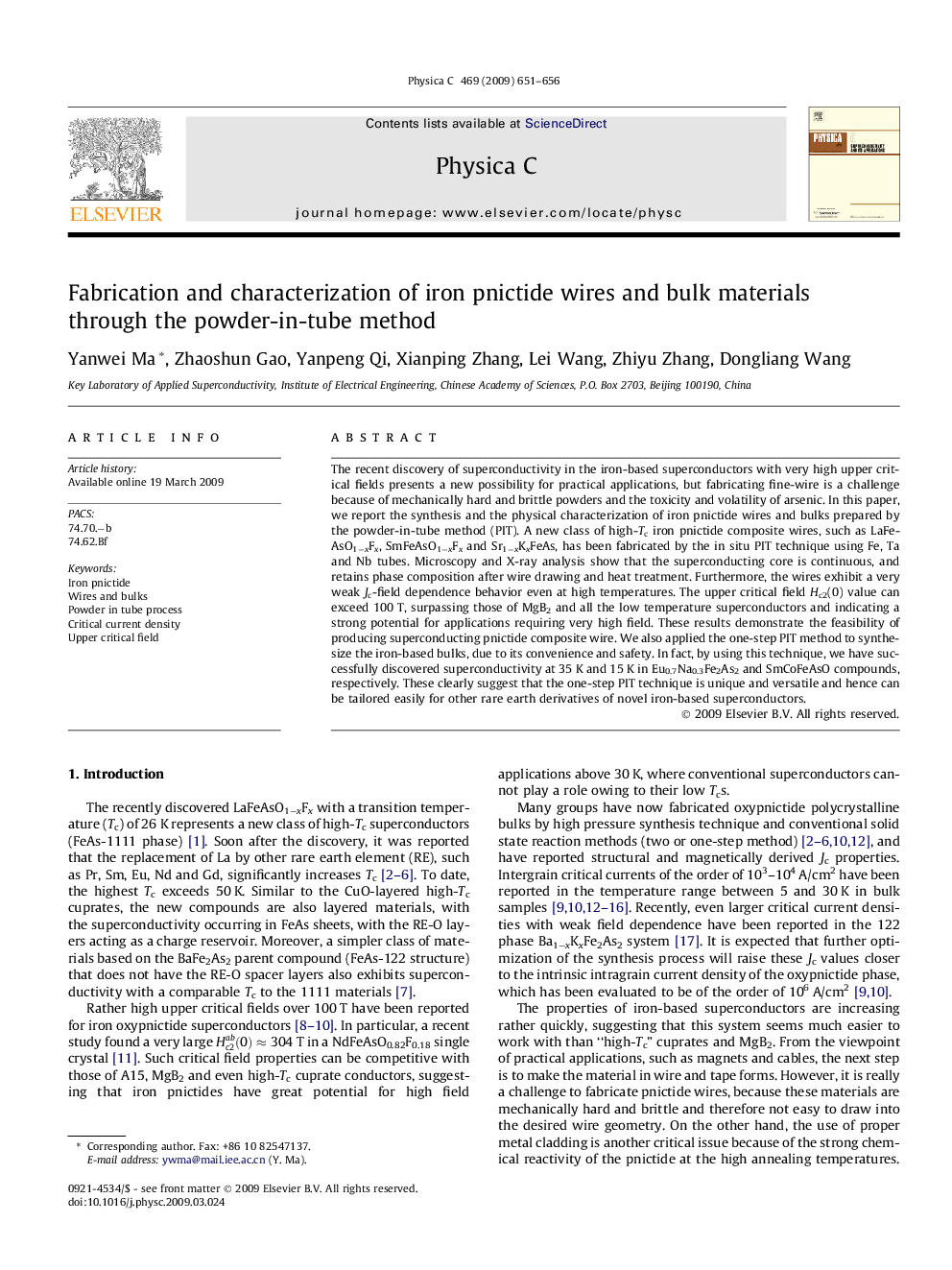| Article ID | Journal | Published Year | Pages | File Type |
|---|---|---|---|---|
| 1819134 | Physica C: Superconductivity and its Applications | 2009 | 6 Pages |
The recent discovery of superconductivity in the iron-based superconductors with very high upper critical fields presents a new possibility for practical applications, but fabricating fine-wire is a challenge because of mechanically hard and brittle powders and the toxicity and volatility of arsenic. In this paper, we report the synthesis and the physical characterization of iron pnictide wires and bulks prepared by the powder-in-tube method (PIT). A new class of high-Tc iron pnictide composite wires, such as LaFeAsO1−xFx, SmFeAsO1−xFx and Sr1−xKxFeAs, has been fabricated by the in situ PIT technique using Fe, Ta and Nb tubes. Microscopy and X-ray analysis show that the superconducting core is continuous, and retains phase composition after wire drawing and heat treatment. Furthermore, the wires exhibit a very weak Jc-field dependence behavior even at high temperatures. The upper critical field Hc2(0) value can exceed 100 T, surpassing those of MgB2 and all the low temperature superconductors and indicating a strong potential for applications requiring very high field. These results demonstrate the feasibility of producing superconducting pnictide composite wire. We also applied the one-step PIT method to synthesize the iron-based bulks, due to its convenience and safety. In fact, by using this technique, we have successfully discovered superconductivity at 35 K and 15 K in Eu0.7Na0.3Fe2As2 and SmCoFeAsO compounds, respectively. These clearly suggest that the one-step PIT technique is unique and versatile and hence can be tailored easily for other rare earth derivatives of novel iron-based superconductors.
